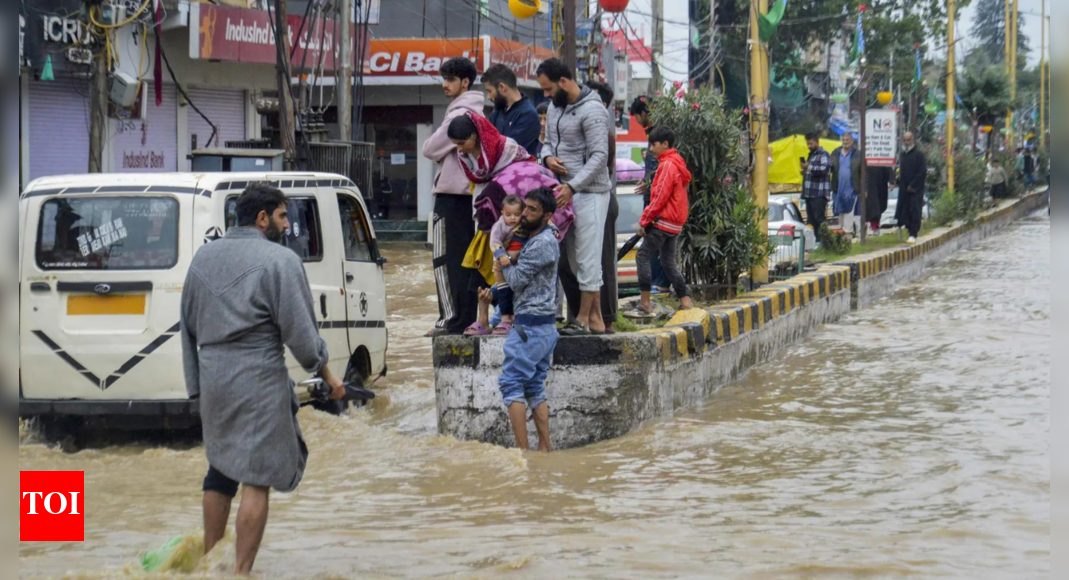Travel Guides & Articles
India Resumes E-Visa Services For Chinese Tourists, A Game-Changer For Travel, Culture, And Economic Growth

Published on
August 23, 2025
India is reopening its e-visa services for Chinese tourists on July 24, 2025, after a five-year hiatus. This significant move aims to revive tourism, foster cultural exchange, and strengthen economic ties between the two nations. The resumption of the e-visa process is expected to boost inbound travel from China, which was significantly reduced due to past political tensions and the pandemic. By simplifying the visa application process, India hopes to attract more Chinese tourists, benefiting local businesses, tourism infrastructure, and cultural diplomacy.
India will resume its e-visa services for Chinese nationals on July 24, 2025, following a five-year pause triggered by border disputes and the global pandemic. This resumption aims to boost cultural exchanges and strengthen economic relations between the two nations. The simplified e-visa process will allow travelers to apply online and complete biometric verification, making it easier for Chinese citizens to visit India.
The reopening of the e-visa facility marks a significant diplomatic step, ending the suspension that began after the 2020 Galwan Valley clashes and the global COVID-19 pandemic. For years, the lack of a visa process hindered tourism from China, which had once been a major source of visitors to India. This policy shift signals the start of a new chapter in India-China relations, fostering closer cultural and economic ties.
Reviving Tourism and Cultural Exchange
The return of e-visas is anticipated to significantly enhance India’s tourism industry, which has suffered due to the decline in Chinese tourist arrivals. In 2019, nearly 340,000 Chinese nationals visited India, but this number plummeted to just 30,000 in 2023. With the reopening of the e-visa system, experts predict that around 200,000 Chinese tourists will visit India by 2025-2026. The reopening also aligns with other diplomatic initiatives, such as the restoration of direct flights between India and China, and collaborative efforts for border de-escalation.
Chinese travelers are captivated by India’s vibrant cultural and spiritual legacy. The iconic Golden Triangle, which includes Delhi, Agra, and Jaipur, continues to be a favored itinerary. This journey unveils India’s historical gems, such as the magnificent Taj Mahal in Agra, the grand Red Fort and Qutub Minar in Delhi, and the majestic Amer Fort and City Palace in Jaipur, offering a perfect blend of architectural marvels and rich history.
Economic and Cultural Benefits
The revival of Chinese tourism will have a ripple effect on India’s local economies. Key tourist regions like Delhi, Agra, Bodh Gaya, and Jaipur will see a surge in economic activity, benefiting local businesses, hotels, and artisans. These regions are expected to experience growth in job opportunities, revenue from accommodations, and sales from local crafts and souvenirs.
Tour operators can expect to develop more tailored experiences for Chinese travelers, such as Mandarin-speaking guides and packages focused on India’s Buddhist heritage. Pilgrimage sites like Bodh Gaya and Sarnath, along with others on the Buddhist Circuit, will become more accessible, facilitating spiritual tourism.
The growth of tourism also aids in enhancing diplomatic relations by encouraging mutual understanding through cultural exchange. As Chinese tourists explore India’s spiritual and historical landmarks, these visits can help break down barriers and foster goodwill between the two countries.
Key Beneficiaries
Several sectors stand to gain from the reopening of e-visas for Chinese nationals:
- Tour Operators: Travel agencies specializing in cultural and heritage tours will benefit the most by offering curated itineraries that cater to Chinese tourists’ interests.
- Hospitality Industry: Hotels, resorts, and restaurants, especially in major tourist destinations, will experience higher demand, particularly during peak seasons.
- Local Businesses: Artisans, food vendors, and souvenir shops in cities like Delhi, Agra, and Varanasi will see increased foot traffic and sales.
- Retail and Services: Retailers and service providers catering to international tourists will experience greater business opportunities, from transportation services to souvenir shops.
- Cultural events and venues in India stand to benefit greatly from the return of Chinese tourists. These travelers frequently participate in festivals and local celebrations, boosting footfall at various cultural venues across the country. Their presence at these events helps elevate the overall visitor experience and contributes to the vibrant cultural scene, making these gatherings even more dynamic and internationally recognized.
Simplified Visa Process
To encourage Chinese tourism, the e-visa process has been streamlined. Applicants can now submit their applications online through India’s official e-visa portal, book appointments at visa centers in Beijing, Shanghai, and Guangzhou, and complete biometric verification. Once approved, the e-visa allows for a hassle-free journey to India.
India’s decision to reopen e-visa services for Chinese tourists is a pivotal moment for both countries. It will not only revitalize India’s tourism sector but also help rebuild the cultural and economic connections that have been strained in recent years. With the reopening of the visa system, China’s long-standing interest in India’s spiritual and cultural offerings will once again become a driving force behind mutual cooperation, enriching both nations in the process.
Travel Guides & Articles
Delhi rains: SpiceJet issues advisory; urges passengers to check flight status | India News

NEW DELHI: SpiceJet on Thursday issued a travel advisory as heavy rains disrupted flight operations in Delhi. The airline cautioned passengers that weather conditions could lead to delays and cancellations across its network. “Due to bad weather in Delhi (DEL), all departures/arrivals and their consequential flights may be affected. Passengers are requested to keep a check on their flight status,” SpiceJet said in a statement.The advisory came as heavy downpours lashed parts of Delhi-NCR on Wednesday, adding to the city’s weather challenges. The India Meteorological Department forecast “generally cloudy sky with moderate rain” for the capital, along with the possibility of thunderstorms over the next two days.The impact of the rains was felt beyond flight operations, with the Yamuna River crossing the danger mark of 205.33 metres and touching 207 metres at the Old Railway Bridge. Authorities set up relief camps and deployed National Disaster Response Force teams to evacuate families from low-lying areas in Yamuna Khadar, Mayur Vihar Phase-I, Old Usmanpur and Yamuna Bazar.Officials said thousands of people, along with their cattle, were moved to temporary shelters, while parts of Noida near Sector 167 also reported flooding after the river overflowed into residential areas.
Travel Guides & Articles
Kalka-Shimla toy train halted for third day due to rain; tourism and taxi sector hit | Latest News India

The iconic Kalka-Shimla toy train services remained suspended for the third consecutive day on Wednesday due to multiple landslides and track blockages caused by incessant rainfall across Himachal Pradesh, severely impacting the tourism and taxi business in the hill capital.
Continuous heavy rains for nearly a week have disrupted normal life in the state, blocking roads and damaging infrastructure. The Northern Railway has announced that all services on the UNESCO World Heritage narrow-gauge route will remain suspended until September 5 as engineers work to clear debris and repair damaged sections of the track, particularly near Datiyar in the Solan district, where a portion of the track has reportedly been washed away.
The suspension has hit local tourism-related businesses hard, especially during the monsoon season when many visitors prefer the toy train for its scenic yet relatively safe travel experience.
Luckey, President of the Taxi Union at Shimla Railway Station, told ANI that the halt in services has left many drivers struggling to make ends meet.
“The rain has caused a lot of trouble. Roads are blocked almost everywhere. Our business has been badly affected. The train was our only link, bringing in some tourists, but it has been closed for five days now. We are finding it hard to even cover our daily expenses,” Luckey said.
He added that while the Railway has officially notified suspension until September 5, the damage is extensive.
“They say landslides have occurred in multiple places and near Datiyar, the track itself is gone. Even here at the station, we have to leave our vehicles and walk to avoid damage, because trees are falling everywhere. Our livelihood was running only because of the train, but since it stopped, everything has come to a standstill,” he lamented.
Authorities have deployed teams to clear landslides and restore connectivity on the track, but with more rain forecast, the timeline for resumption of services remains uncertain.
The Kalka-Shimla toy train, built in 1903, a heritage train route is one of the region’s biggest tourist draws, offering panoramic views of the mountains, valleys, and colonial-era architecture. Its prolonged suspension during peak monsoon season is expected to cause further economic strain on those dependent on tourism in the city.
Travel Guides & Articles
India’s TBO to acquire Classic Vacations

India based travel distribution platform TBO has agreed to acquire Classic Vacations from Phoenix-based investment firm, The Najafi Companies.
The transaction value is estimated at up to $125 million.
The acquisition brings together TBO’s technology platform and worldwide inventory with Classic Vacations network of luxury travel advisors and suppliers.
Classic Vacations delivered revenue of $111 million and an operating EBITDA of $11.2 million in the fiscal year ended December 31, 2024.
“We’re thrilled to bring Classic Vacations into the TBO family – the company’s longstanding delivery of outstanding services has earned the trust of its more than 10,000 travel advisors in the U.S,” said Gaurav Bhatnagar, TBO’s co-founder and joint managing director.
“Classic Vacations is led by a strong team of experts and will continue as an independent brand.”
“As we start working on integrating Classic Vacations with TBO, we will remain open to similar strategic alliances going forward,” added Ankush Nijhawan, co-founder and co-managing director.
Melissa Krueger, CEO of Classic Vacations, added: “Together, we’re strengthening Classic Vacations’ position as the premier luxury partner in the market while extending our reach onto the global stage.”
Classic Vacations was bought by The Najafi Companies in 2021 from Expedia Group.
Classic Vacations has a large network of high-value travel advisors and deep ties with major American consortia.
It delivers premium service across hotels, air, experiences, car rentals, and travel protection, specializing in bespoke luxury itineraries.
Related News Stories: Partner News – TravelMole
-

 Business5 days ago
Business5 days agoThe Guardian view on Trump and the Fed: independence is no substitute for accountability | Editorial
-
Tools & Platforms3 weeks ago
Building Trust in Military AI Starts with Opening the Black Box – War on the Rocks
-

 Ethics & Policy1 month ago
Ethics & Policy1 month agoSDAIA Supports Saudi Arabia’s Leadership in Shaping Global AI Ethics, Policy, and Research – وكالة الأنباء السعودية
-

 Events & Conferences4 months ago
Events & Conferences4 months agoJourney to 1000 models: Scaling Instagram’s recommendation system
-

 Jobs & Careers2 months ago
Jobs & Careers2 months agoMumbai-based Perplexity Alternative Has 60k+ Users Without Funding
-

 Education2 months ago
Education2 months agoVEX Robotics launches AI-powered classroom robotics system
-

 Funding & Business2 months ago
Funding & Business2 months agoKayak and Expedia race to build AI travel agents that turn social posts into itineraries
-

 Podcasts & Talks2 months ago
Podcasts & Talks2 months agoHappy 4th of July! 🎆 Made with Veo 3 in Gemini
-

 Podcasts & Talks2 months ago
Podcasts & Talks2 months agoOpenAI 🤝 @teamganassi
-

 Education2 months ago
Education2 months agoAERDF highlights the latest PreK-12 discoveries and inventions





















